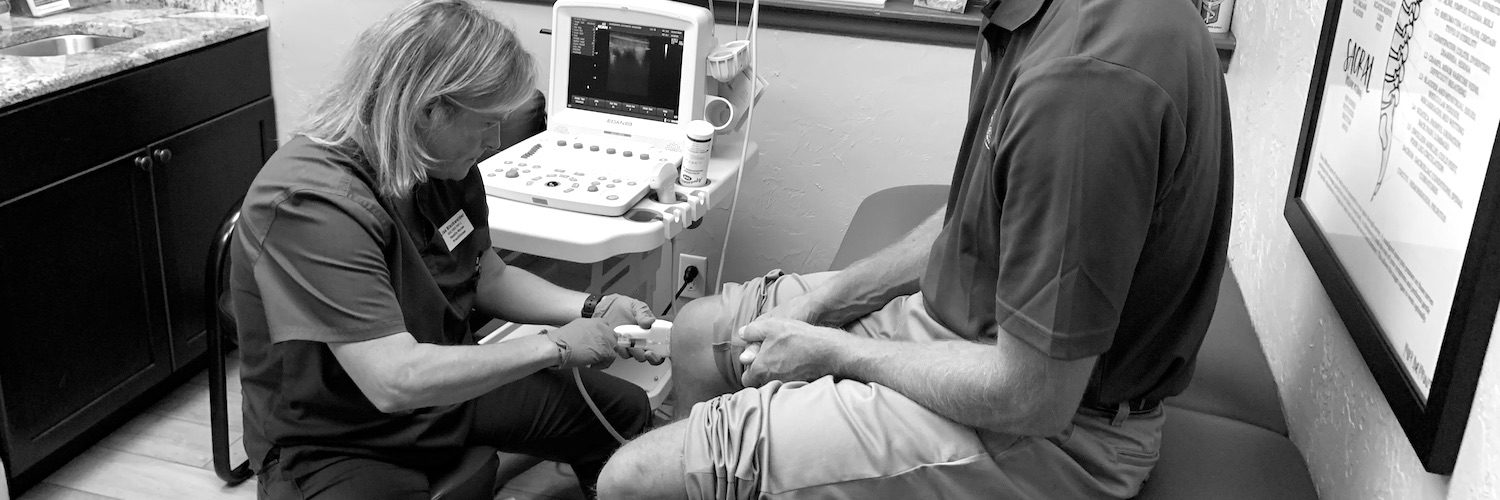
Platelet Rich Plasma - PRP Injections
PRP injections are often used to speed up healing of injured joints.
Platelet-rich plasma (PRP) therapy uses injections of a concentration of a patient's own platelets to accelerate the healing of injured tendons, ligaments, muscles and joints. In this way, PRP injections use each individual patient's own healing system to improve musculoskeletal problems.
PRP joint therapy uses the natural healing power of your own blood to help you regain mobility and agility without downtime or side effects. This all-natural therapy has become the go-to non-surgical solution among professional athletes for joint pain and repair of soft tissue injuries. In one study, 93% of patients were completely satisfied with their PRP joint therapy treatment. This easy, in-office treatment is the perfect solution to get you moving again.
All In Family Medicine uses ultrasound to guide every joint or tendon injection to provide the safest and most effective PRP treatments possible.
Want to find out if PRP Injections are right for you?
More Information on Platelet Rich Plasma (PRP) Injections
Plasma is the liquid component of your blood that houses your blood cells. One blood cell type, called platelets, has the critical job of clotting your blood to help heal injuries. They’re responsible for creating scabs and stopping you from bleeding. Platelets also contain vital growth factors that help stimulate new tissue regeneration and repair.
Platelet-rich plasma (PRP) is a substance acquired from your own blood containing plasma with a high concentration of platelets. Generally, you’ll find 5-10 times more platelets in PRP than your normal blood. When injected near an injury, it speeds up the healing process.
PRP Can Help
- Minimize joint pain
- Improve joint function
- Reduce the need for surgery
- Speed healing
- Rejuvenate damaged tissue
Frequently Asked Questions
What happens during a PRP joint therapy treatment?
The process begins when we draw your blood and place it in a specially-designed centrifuge. This allows us to isolate the platelets we need for the rejuvenation of musculoskeletal tissue. This process takes about 15 minutes. We then numb your specific treatment area with a topical anesthetic. Using ultrasound, we will locate the precise areas of inflammation before carefully injecting them with PRP for maximum healing benefits.
How long does PRP joint therapy take?
This will vary, depending on the severity of your pain and injuries, but most often the entire treatment takes less than an hour.
How much downtime can I expect with PRP joint therapy?
Most patients resume their normal daily activities immediately following treatment. Depending on the severity of the pain or injury and treatment received, some patients may need to rest for a brief period after treatment. Unlike surgery, no long-term rest or recovery time is necessary with PRP treatments.
What are the most common side effects of PRP joint therapy?
Side effects with PRP joint therapy are rare, though there can be some swelling or stiffness at the injection site. These side effects resolve quickly on their own in the hours to days following treatment. Applying ice can help reduce any discomfort.
How many treatments will I need?
The number of treatments needed varies, depending on the specific issues of the patient. However, most patients require only one or two treatments to achieve improvements. Every case is unique, so we will work with you to develop a treatment plan that is tailored to you.
